Birds (pigeons, gulls, etc.)
These are endothermic vertebrate animals that lay eggs and are distinguished by the presence of a beak and feathers. In the position of the upper limbs they carry wings which in the vast majority of cases gives them the ability of flight.
Some bird species have adapted to live close to humans taking advantage of urban, semi-urban, as well as agricultural environments. They are usually popular with people, however, under certain conditions they can be harmful and require attention. Along with birds, bats are examined as well although these are mammals. Ιn certain countries, including Greece, bats are protected by law due to their decline in numbers. Their disturbance is not allowed and their removal can only happen under special circumstances with permission granted by the relevant authorities.
Dangers to public health
Birds, directly or indirectly, are responsible for transmitting many microbes that cause the onset of serious diseases in humans (more than 60) some of which are potentially fatal.
This is done by:
- Human contact with bird body, plumage, droppings, as well as water, food and surfaces contaminated by them.
- Inhalation of fecal dust containing amongst others, fungal spores and bacteria.
- Arthropods: mosquitoes, acari (ticks, acari that cause allergies, etc.), bedbugs, etc.
In relation to the above, humans can contract: histoplasmosis, psittacosis, candidiasis, encephalitis, salmonellosis, gastroenteritis (from E.coli bacteria), viral diseases, rabies (bats), etc. The aforementioned diseases are merely a small example of a far more extensive list.
Food Damage
Food damage from birds is usually limited to the primary production stage. Birds will frequently attack arboricultures, granaries, vineyards and generally where crops are produced on open-field cultivations. The result of this activity is often the reduction of the amount of harvested product.
Structural and property damage
There are two main methods by which birds cause damage:
- Initially mentioned, is the corrosive effect of their droppings on surfaces of concrete, rocks, metals, paint, etc. Therefore, deteriorations are observed in building facades, statues, vehicles, etc
- Subsequently mentioned, is the case of the blockages caused by their nesting but also by the accumulation of their droppings. Birds tend to get established on surfaces which protrude from buildings such as sills, gutters, air conditioning units etc. as these tend to replicate their natural habitat. Especially in the case of air conditioning, the establishment of nests and the accumulation of droppings pose a fire hazard.
Birds also cause major trouble for flight safety, especially when located in large flocks on or near airport runways.
Risk to reputation
Whilst birds are almost everywhere, it is the mess and droppings derived from them which can damage the reputation of any business.
Signs of bird activity (ex.: excretions, organic residues) may cause problems with customers and/or losing them, who subsequently are very likely to communicate information and cause a further decline in clientele.
The presence of birds often creates problems, not only in relation to customers but also with the employees.
Legislation
The public health legislation relating to the problems caused by the presence of birds, covering health inspections must always be adhered to. In cases of offence the imposition of sanctions is provided. In extreme cases, the suspension of the operating permit is enforced and business owners can be prosecuted.
Control
In most countries including Greece, birds are protected and treatments that can hurt or kill them are prohibited. In compliance with the relative legislation regarding their control, Defon’s treatments are limited to repellency according to the company’s Integrated Pest Management (IPM) system. This refers to the prevention of their establishment and/or their repellency, predominately with physical (mechanical) and chemical methods. These methods can be used individually or in combination. For additional information see Defon’s environmentally friendly IPM methodology section.
The transmission of pathogenic microbes by birds into areas they were previously established often requires disinfection to be carried out after repellency. More details on the subject are listed in the Disinfection section.


